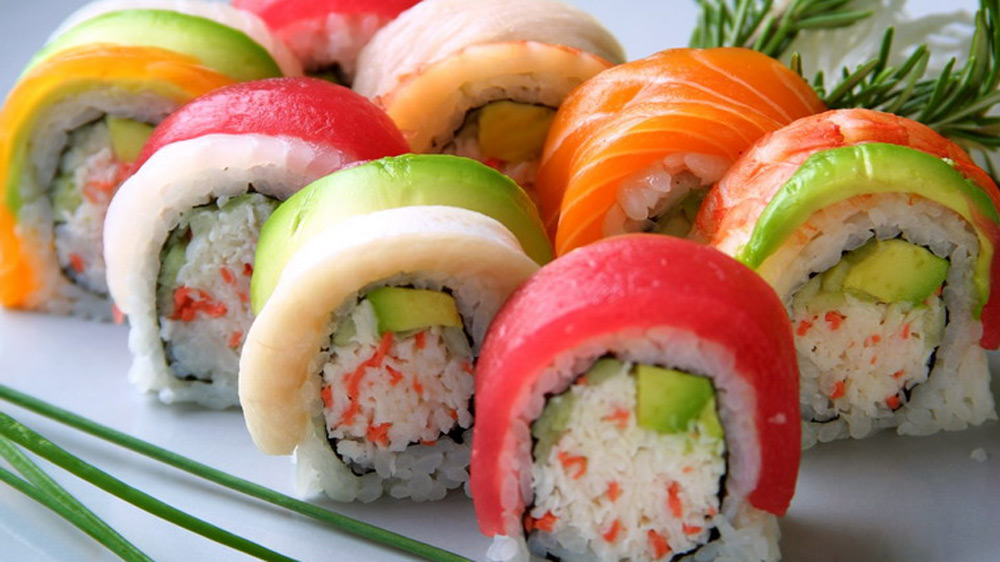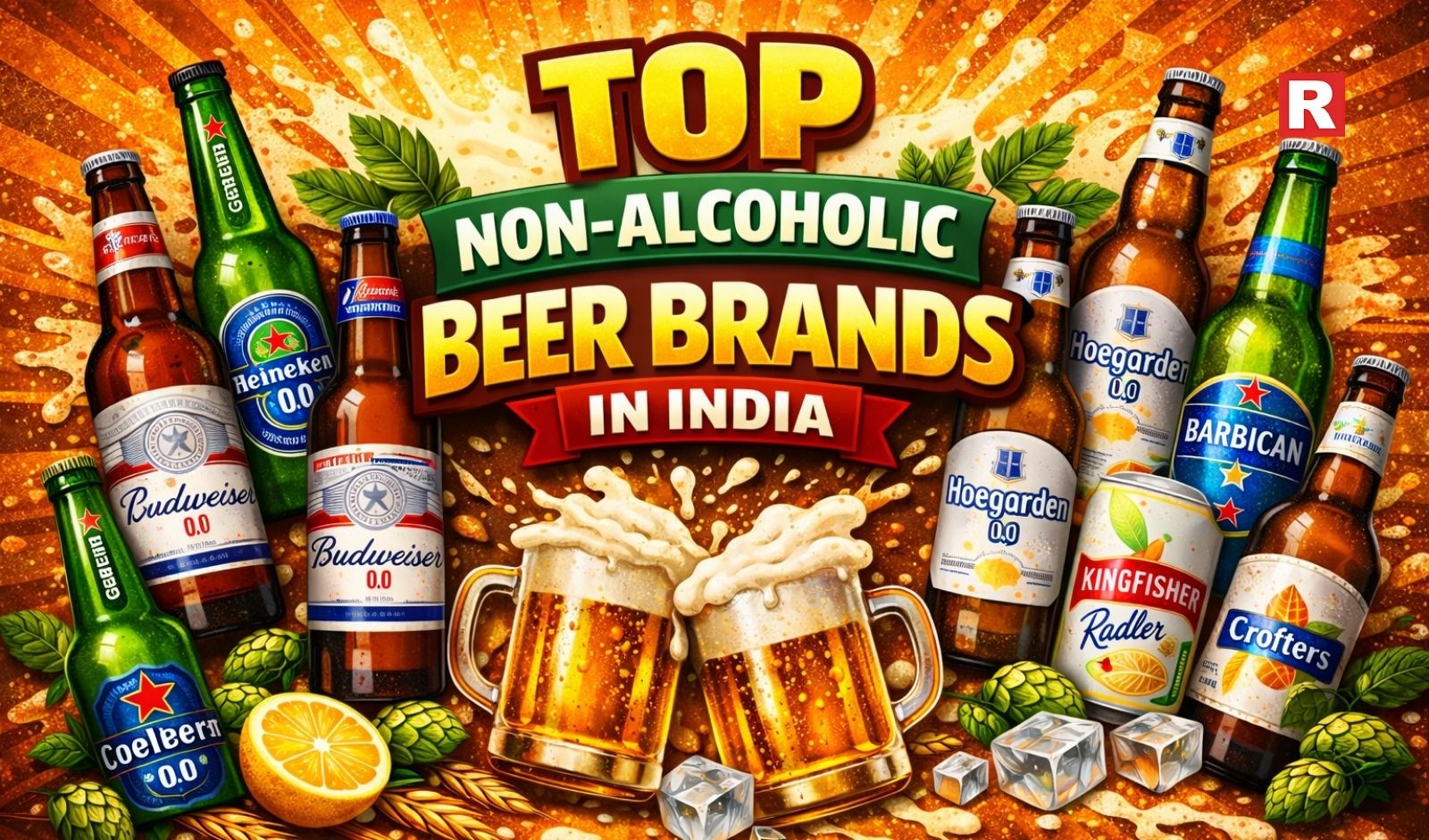
Come summer and ice-cream is usually promoted with all kinds of images that titillate the senses and tempt consumers as being a product that they simply cannot miss out. The delectable summer treat comes in the form of bars, sandwiches or scoops and is often topped with flavours, nuts, chocolate chips which make the ice-cream even more irresistible.
However, while ice-cream manufacturers can get creative about ice-cream they also need to keep in mind the food regulations so that their product continues to be enjoyed safely by consumers.
Food Safety and Standards Authority of India (FSSAI) has categorised ice-creams under “Dairy Based Desserts/Confections” and under the category of ice-cream they have ice-cream, kulfi, chocolate ice-cream and softy ice-cream which are all obtained by “freezing a pasteurized mix prepared from milk and /or other products derived from milk with or without the addition of nutritive sweetening agents, fruit and fruit products, eggs and egg products, coffee,cocoa, chocolate, condiments, spices, ginger and nuts and it may also contain bakery products such as cake or cookies as a separate layer and/or coating. “
Ice- creams may be frozen hard or they may be of a soft consistency but one thing they must have is a pleasant taste and smell and must not have any off flavour or odour. Ice- cream can contain permitted additives but the FSSAI says the product must be tested formicrobiological parameters so that it does not contain any organisms such as Salmonella, Staphylococcus, Listeria, and others that can cause human disease and are associated with farm animals.
Ice- cream is also categorised as Ice- cream, Medium fat ice-cream and Low fat-ice-cream depending on the percentage of total solids, milk fat, milk protein used.Where chocolate, cake or similar food coating, base or layer forms a separate part of the product only the “ice cream” portion will need to conform to the requirements in the table below. FBO’s need to keep in mind that type of ice-cream (whether medium or low fat) shall be clearly indicated on the label otherwise standard for ice-cream shall apply.
| Requirement | Ice cream | Medium fat ice-cream | Low Fat ice-cream |
| (1) | 2) | (3) | (4) |
| Total Solid | Not less than 36.0 percent | Not less than 30.0 percent | Not less than 26.0 percent |
| Wt/Vol (gms/l) | Not less than 525 | Not less than 475 | Not less than 475 |
| Milk Fat | Not less than 10.0 percent | More than 2.5 percent but less than 10.0 percent | Not more than 2.5 percent |
| Milk Protein (Nx6.38) | Not less than 3.5 percent | Not less than 3.5 percent | Not less than 3.0 percent |
The FSSAI regulations also have another definition which is similar to ice-cream but is called Frozen Dessert / Frozen Confection. This product is defined as“product obtained by freezing a pasteurised mix prepared with milk fat and / or edible vegetable oils and fat having a melting point of not more than 37.0 degree C in combination and milk protein alone or in combination / or vegetable protein products singly or in combination with the addition of nutritive sweetening agents e.g. sugar, dextrose, fructose, liquid glucose, dried liquid glucose, maltodextrin, high maltose corn syrup, honey, fruit and fruit products, eggs and egg products, coffee, cocoa, chocolate, condiments, spices,ginger, and nuts.”
Similar to the ice-cream, frozen dessert is also categorised as Frozen Dessert/ Frozen Confection, Medium Fat Frozen Dessert/ Confection and Low Fat Frozen Dessert/ Confection. The requirement for milk fat and protein is also the same except that the protein is Nx6.25 whereas for ice-cream it is Nx6.38. Frozen dessert may also contain a separate layer of cake or cookies.
Where is the difference???
Food Businesses Operators are usually busy trying to fulfil the demand for the sugary frozen foods in summer. However, they need to pause to see that they know the differences between ice-cream with frozen dessert so that the consumer does not think both are the same. While both the products contain milk solids, fats and proteins a number of the ingredients are totally different.
- One of those ingredients allowed in frozen food but not in ice-cream is vegetable oils and fats
- While you can use any of the emulsifying and stabilising agents permitted in the regulations in frozen desserts all are not permitted in ice-cream{3.1.6 (7)}
Labelling Requirements
- The FSSAI indicates that it is mandatory for all ice cream dealers to “legibly and conspicuously” display their name and address as well as the name and address of the manufacturer on the stall, vehicle or container as the case may be.
- FSSAI also clearly states that every package of ice-cream, kulfi and chocolate ice-cream containing starch shall have a declaration on a label as specified in regulation 2.7.1(2).
This article as an attempt to refresh the minds of the FBOs so that they use ingredients and additives as permitted so that the millions of Indians who love ice-cream can be assured that they are consuming a product that is safe to eat. So that consumers make the right choice FBO’s must label the ice-creams correctly because there is a huge difference between ice-cream and frozen dessert especially in the permitted ingredients and that the labelling must be such that the normal consumer is not deceived. For its part the Apex Food Regulator must also bring in more clarity about ice-creams and frozen desserts neither is mistaken for the other.
About the author:
Dr. Saurabh Arora is founder of Food Safety Helpline and head of Auriga Research Limited laboratories.

Food business scenario in India is changing with every single day. Being an occasion driven place, it has become a place to be. The stuffs, the quality of food that we used to get at a five star restaurants are easily available at much affordable pricing at the new upcoming set of restaurants. This is making restaurants at these hotels to either change their model or keep innovating with time. There is so much of competition in the sector and once you decide on a restaurant and the idea is all ready to be positioned, you notice that somebody in your neighbour copying your idea. “The restaurants are mushrooming a lot. The younger generation is very innovative. You don’t know what is hitting you,” says Chef Sumant Vikas, Corporate Chef-Cremica Foods.
But with the mushrooming of new age stand alone restaurants that are matching the same standard to that of a star restaurant cost benefit is a challenge. Retaining of staff is challenge as the average of the kitchen employee in all these restaurants are maximum one year. “There was a time when hotel chefs feel very proud because their restaurant was the star of the hotel but young entrepreneurs who are opening beautiful restaurants and stand alone restaurant have given them a good competition.” adds Vikas. Also, as the stand alone restaurants are priced a bit sensitively with the same experience as a 5 star restaurants, customers are shifting from in-hotel restaurants to these places because they are getting a better variety at a more competitive price.
Known for their speciality
In-hotels restaurants are always speciality restaurants where they bring in the speciality chefs to do the cuisine. Also, 5 star hotels keep on doing food fests and events to promote cuisine which is also a good practice to boost the growth of the cuisine which these restaurants hardly entertain. Known for their standards which have been followed for years the menu is extraordinary. Chefs coming to the table and taking order is another personal touch that the star restaurants add. “Chefs are becoming more flamboyant and customer centric. Also, we keep on doing at least 4-5 food festivals to make customers taste varied cuisines and also we change our menu 3 times a year to attract our customers who have got bored of our menu and are looking at stand alone restaurants,” points Chef Karthikeyan S of The Rice Boat Kochi.
Though, when we go ten years back restaurant business was about guest satisfaction, today it is about customer delight. And, that is the reason they are able to stand with the star restaurants.
“As a customer I would make 2-3 visits probably to a hotel restaurant but stand alone has become a place which is pocket friendly and affordable to make multiple trips. That’s where people tend to go to stand alone to a 5 star restaurants,” comments Owner at Bundar Café Bengaluru.

As Indians are continuously experimenting with food, it has become an integral part of the conducive business in the country. We see people travelling a lot these days in search of good food and experience culinary repertoire of regions and nations pushing a region wise food trend in the country. Gone are the days when Asian food was limited to Chinese cuisine, restaurants today are offering much more than Chinese and Japanese. Pan Asian cuisine is the new wave in the market with speciality restaurants breaking all food myths. This has pushed a new trend in the industry giving a way to lots of Pan Asian food delivery online place opening up. Cities like Delhi, Bengaluru and Mumbai has already witnessing this change but smaller cities are also joining the bandwagon and setting up speciality delivery places.
Why delivery?
Kula Naidu who was one of the first entrepreneur to set up this trend by setting up only delivery places Asian Haus and Sushi Haus in Delhi four years back today see the great potential for the segment and feels happy to see the awareness of comfort asian food growing in the market. “We realized there are a large demand for delivery and the scarcity for good comfort Asian Food. Our focus is on emphasizing the experience of food delivery and extending it towards a complete brand,” added Naidu who believes that Asian food has a large popularity and is well understood by Indian customers. Since, there haven’t been any places that cater in the same capacity as us, it was our calling. With Italian food, it’s unexplored territory, he further pointed.
Similarly, Joseph Cherian who has spent a substantial time in Asian countries working as CEO of GFA Global and Papa John’s India, he always enjoyed Asian flavours and always dreamt of bringing those flavours back to India. He together with his friend and chef Nabhojit Ghosh under Love Food Ventures Pvt Ltd started 48East which is marked by a multiplicity of regional and ethnical influences. The start-up is representing foodies trail from around 48 countries.
“I spent most of my working years in Asia and Middle East and always felt the need of gourmet Asian food home delivered in India during my stay in India. What is typically available in India for home delivery were home grown Indo- Chinese brands. In addition to the Indo-Chinese food, Asian food was typically a Thai Green curry or red curry, Malaysian, Singapore noodles etc,” shared Kurian who thought of bridging this gap.
Getting the right raw materials
Asian food is all about the complex flavours. Hence, getting the best raw materials is the important aspect of this cuisine. Though, with modernisation and global trade some ingredients can be sourced locally but for few one need to get it flown from their home location to meet the authenticity of that land.
“We have tied up with various suppliers to supply us with both locally sourced and imported ingredients. We need to import some of the items to ensure authenticity of the dished,” added Kurian.
Sharing on the same, Naidu pointed, “a lot of the raw materials required are available in Delhi. Supply does end at times and we can’t do much about till new stock arrives. We deal with vendors who import these raw material from Thailand and Japan majorly. Sourcing is a lot easier in Delhi as it’s the capital.”
And, as we see this trend catching up fast with new players venturing in the space, a lot more focus is showered on presentation and delivery of the food.

Eating at a fine dine restaurants involves lots of experience and memories that a diner takes home. Highly focused around service where a server, chef and other staffs are busy delivering the best to the table, making service charge not mandatory for restaurants will kill the fine dine business in India.
From fine dining being a place for corporate and bureaucrats meeting has now become a place to have good food with fantastic service and everlasting experience. Though, the industry has come together to battle the service charge discretion asking the government to withdraw the announcement this is really going to create a big chaos in the overall eating out scenario. “In fine dining, a customer should be mentally prepared to pay a service charge beforehand. There is always a mix of clientele in this country, the cultured foodies and the aspiring new lot, hence the arguing lot cannot be ruled out. I see fine dining restaurant's trying to absorb the service charge along with food and raising staff salaries. So we go back to how the pricing concepts were in the pre nineties. Keeping the general Indian mentality where tipping is not compulsory, the service team will feel de-incentivised initially, shares Vineet Wadhwa Chairman & Managing Director - VW Cuisines Pvt. Ltd which runs fine dining restaurants FIO Cookhouse & Bar, adding that a 10 per cent tipping should be a suggestive norm of the industry either by tip or a fixed service charge .
Today, fine dine restaurants are not only improving the food quotient but witnessing the global trend and practices they are going on more ‘casual’ side introducing casual fine dine trend in the market. And, announcements like this will act as a roadblock for such growth. “Food and Beverage industry is one of the highest employers in India. Service charge is vital for the business model and for the employees. Discretion will not only affect the restaurateurs but also the Staff member’s earnings. We do our best to make our Customers happy, the industry has to move towards more guest satisfaction and this might boost the entire scene. We internally however will work out better perk and bonus systems for our employees for their motivation,” says Amit Kapoor, Co founder at Ninkasi.
Adding to the same lines, Pradeep Shetty, Hon’ Secretary, HRAWI & Chairman of legal matters subcommittee, FHRAI & HRAWIadds, “Service charge is the amount paid to the staff of the restaurant or other similar establishments. An establishment may choose to include this amount in the bill itself and the percentage may vary from 5 per cent to 15 per cent of the value billed. This is a common and accepted practice in India as well as several other countries. Service charge is not a government levy, and is not to be confused with VAT or Service Tax,” adding that they regret that the department came out with such an advisory which is misleading and has built a wrong notion about hotels and restaurants amongst their customers.”
Hence, at a time when industry is making waves not only in India but globally, such move will kill the charm.

Food in India is as diverse as its culture. And, over the years it is changing with efficiency and innovation is the food as the demand of the hour. Bringing in some regional tweaks and global parameters are the key that chefs have been focusing on to keep the industry going.
With a successful history as compared to other parts of the world, Indian food culture is known for discovering its local menus to creating thousand recipes out of that local, fresh and indigenous spices and ingredients which it boasts of.
Sticking to the basics
Though progressively moving Indian food industry has seen a push in the trend where chefs are sticking to the basics or are going more traditional introducing lots of Tamasha around food and its presentation. “ Keep your food the way it is for years is what I believe in as Indian food is one of the best known food globally,” shares Chef Anthony En Yuan Huang, Executive Chef, JW Marriott Bengaluru who believes in keeping a food in its original form rather than playing with its and making it all together a different item.
Since, Indian food till today is said to be or remembered as Punjabi food and to break this myth Indian chefs globally are coming up with a modern version of the cuisine popularly known as progressive Indian cuisine where they are promoting the lost ingredients, traditional recipes and undiscovered spices from unexplored regions of India. “We need to support and promote our product, ingredient. The recipes need to be tried and tested before we bringing into for masses,” adds Chef Vijay Anand Bakshi, Corporate Chef who is running multi award winning restaurant Paradise known for its Biryani and chicken recipes.
It’s all about the INGREDIENT
The selection of ingredients can make or break a restaurant. And as food now a days is married with tourism, people are looking for a varied menu and cuisine making the ingredient the king of the ecosystem. “Food is all about evolvement, setting up new recipes ingredients,” says Chef Ajit Bangera, Senior Executive Chef, ITC Grand Chola- Chennai who believes that there is nothing called authenticity of the food.
And, today people are going into a way faster life, their style of living, the way the cosnume food has changed as compared to five years back. Hence, they are looking for ingredients and stuffs that can prepare the same food in quicker, faster and easy ways,” points Thashvin Muckatira of One Night In Bangkok which is one of the trending pub in Bengaluru.
Meanwhile, experts also believed that since there is an acceptance of global cuisine, which India has adapted to be in tune with the global trends, there are lots happening for the betterment of their own food. Indians today are much more attracted towards food that they see on TV or are prepared by their favourite chef. “The basic is ingredients and putting them right, comments Chef Kasi Viswanathan , Vice President - SICA & Executive Chef - Radisson Blu - Atria, Bengaluru.
Adding to the same line, Amit Shukla of DS Spiceco shares, “Standardisation of inputs and ingredients play an important role in cooking food,” adding that people come for your food and not ambiance.
Thus, we can say that Indian cuisine in itself is very unique and innovative if presented well. And, with its own charm we can say Indian cuisine is here to stay.

Over the short and medium terms, the demonetization drive will have varied effects on the many sections of the hospitality industry in the country, but in the long term will positively impact the growth of the hospitality sector.
Often, the strong season for the hospitality sector in the country extends from October to March, which to a large extent defines the success for the industry in any given year. The lack of available currency will force some hospitality customers to either postpone / cancel their travel and accommodation or to use hospitality products that easily allow the use of the other modes of payments.
The demonetization drive will benefit the organized hospitality sector in India the most. Combined with the general uptake in the sector, the movement of customers to the organized sector due to ease of alternate modes of payment will positively impact the market. However, given the larger base of hotel rooms in the country is in the unorganized sector, we anticipate the general performance of the industry to witness some stress in the short term.
The hospitality and the tourism markets are renowned for their ability to create a large number of direct and indirect jobs in the country. With the inability of customers / tourists to easily spend on frills due to lack of available currency, the unorganized industry will suffer the most in its ability to create new jobs. The impact of demonetization will also be felt by the suppliers of consumable goods, who often work on cash transactions with their wholesale counterparts.
The unorganized inventory of hotels in the industry will be most impacted by this move. In addition, the leisure sector hotels and restaurants segment will see a higher impact on account of the discretionary nature of spending in this sector, and the substantially larger base of cash transactions that occur in its when compared to mainstream business hotels.
Also, the restaurants business - both in hotels and standalone - will see a short-term slowdown in growth on account of the reduced availability of cash and the generally high usage of cash spending in restaurants.
The organized banqueting business will witness growth, as customers move from the almost cash-only unorganized sector of standalone party venues and farm houses to hotels for want of non-cash means of payment. The weddings business will also return to Indian hotels from their Overseas counterparts, as unofficial channels for offshore transfers of cash have dried up, forcing the cancellation of many Indian weddings from foreign locales back to hotel venues in India.
The tourism and hospitality sectors are intrinsically tied to the economic conditions of any country. The boost provided by the demonetization move to the macro economy of the country will effectively trickle down to the industry.
With banks being flush with liquidity, we anticipate a major reduction in interest costs, which augurs well for the growth of the industry. As more liquidity enters the organized sector along with some further softening of land rates and gradual movement towards cleaner real estate transactions, we anticipate investments into the sector to increase from the organized players who have, in the past, shied away due complexities associated with underlying real estate.

In last two years eating out scenario has been tremendously growing in the country with people eating as much as 5 times a week. But, with Prime Minister Narendra Modi’s strong decision to ban Rs 500 and 1000 notes has strongly affected the eating out scenario in last two days.
“PM Modi's move to ban Rs 500 and Rs 1,000 denominations will certainly have impact on restaurant / hospitality Industry. Now there will be huge fall in the openings of the new cafes / restaurants,” shares Rohit Malhotra, Country Head, Barcelos India.
Not only this, the restaurants that used to outperform with people waiting outside to look out for their numbers have been badly affected by this short-term move. “Consumer spends at restaurants dropped as much as 40-45 per cent on Wednesday. But for long term this move is very positive and will benefit the growth of the sector,” says Riyaaz Amlani, President NRAI and CEO Impresario Hospitality and Entertainment.
Cashing on this ground, several restaurants started giving discounts while others started offering cash backs with their wallet partners.
"It is a very big step for the economy but has taken everyone off guard. The move is likely to cause a huge amount of uncertainty and will disrupt transactions, especially for smaller hotels, restaurants like us. Today it's a little bitter but this is for our country bright future country,” believes Dinesh Arora, Owner of Tourist Janpath.
Adding to the same line, Shree Bharambe, Co-founder & CEO, Fingerlix shares, “We at Fingerlix welcome this move by the Government. For start-ups like Fingerlix that depend on the retail channel for reaching the consumers there will be an immediate-term impact as the consumers re-adjust their currency holdings. However, the back-end operations are already non-cash and hence will not be impacted in any way. We believe that from a longer term perspective, this move is a significant step forward for the nation."
Although fall in property prices, drop in competition and reduce in unnecessary demand in labour will bring good time for restaurant industry ahead. This decision will hurt black money hoarders the most but it may also cause inconvenience to the common man — even if only for a few days

Bakery products, due to high nutrient value and affordability, are an item of huge consumption. With population rise, the rising foreign influence, emergence of female working population and the fluctuating eating habits of people, bakery products have gained popularity among people, contributing significantly to the growth trajectory of the bakery industry.
Bakery holds an important place in food processing industry and is a traditional activity. The bakery industry in India today has an important place in the industrial map of the country. If industry reports are to be believed, the bakery industry has achieved third position in generating revenue among the processed food sector. The Indian Bakery market is estimated to be worth Rs. 16,500 crore, growing at a healthy 7.5 per cent per annum. It is one of the largest food industries consisting various product categories. These bakery products are fast catching up with the popularity trend as lifestyle of Indians are rapidly changing.
The bakery segment in India can be classified into the three broad segments of bread, biscuits and cakes. Today, they are not restricted to bread, cakes and biscuits, but to other bakery products also. Here are a few trends that will redefine the pastry industry in India:
Geographical Innovation: With advanced aspiration for increased socialisation, Indian consumers are forcing the demand for more hang-out options. The segment’s innovation has powered the rise of newer café formats like bakery cafés, which reverse the concept of cafés by extending existing bakeries and chocolate retailers to offer complementary beverage items. Thus, unlike a regular café, a bakery café is, at the core, a provider of baked food, with the beverage segment only a complement to the menu. A typical bakery café menu includes a wide selection of breads, encompassing such exotic variants as wheat, rye, five-grain, multigrain, cracked wheat, flute, baguettes and ciabatta, and other baked goodies like brioches, croissants, cookies, muffins, cakes, scones, strudels, brownies, pies and puffs.
The concept of bakeries and bakery cafés, although has gained traction in recent years, is not new to India. Earlier, bakeries were set up as a result of the British influence. Constant product innovation is a major challenge for a bakery café. Given that many of the food products offered at bakery cafés are best enjoyed absolutely fresh, efficient production and inventory management is a must-tackle challenge.
Experimentation with flavours: Experimentation has become a key driver in the pastry market and a way to spark interest with younger consumers in particular. One way in which everyone's interest is quirked is by using unusual flavour combinations. Globally, such innovations are finding appeal with consumers who are demanding newer options. I myself experiment with combinations of cardamom and chocolate or orange and chocolate and even green tea with chocolate, for instance.
Healthy options
For those who want to have their cake and diet too, calorie-controlled items fit the bill. Consumers will pay more if what they buy is good to eat. They understand that nutritious options come at premium. So preservative-free, cholesterol-free, soy-free, GMO-free, low-sodium and 'suitable for diabetics' are the product categories that will definitely be more popular. These satisfy your craving without adding to the calories & making you feel guilty after having them
Fusion Sweets
Culinary logic suggests that only similar flavours should be paired up but Indian food is an outstanding example of how radical flavours, when rubbed the right way could work together to create some delicious magic. Perhaps this is the reason why the alchemy that is Indian cooking lends itself to innovation and experimentation. All over the world, Indian cuisine is creating fans of good taste. In such a scenario, 'fusion desserts' are winning over hearts and stomachs. My baked rasgullas are extremely popular with patrons, as are the Banana and Hazelnut Laddoos.
Jar Cakes
Jar cakes have really caught the pastry lover's fancy. They look pretty convenient to carry and are also a beautiful gifting idea. Where a regular cake becomes too fragile to carry, these jar cakes are easy to mobilize. They also allow you to have your cake, eat it and keep some in the fridge for tomorrow.

Researches claim that the US food market will be completely taken over by healthy gluten free products in the coming years. According to the report, today the consumers seek fresh, natural and minimally processed food with beneficial ingredients that help fight diseases and promote good food. It also avouches that the consumers want healthy food and are ready to pay more for them.
Which brings us to the main question- Where does India stand on this ground?
While it is believed that the west has always relied on healthy and minimum dietary food items, India and most of Asia are still struggling with extra sugar and fat based products. The latest figures released by the International Diabetes Federation (IDF) reveals that India homes the largest number of people suffering from Diabetes- 50.8 million, followed by China (43.2 million) and the United States (26.8 million). Another study claims that Singapore is the world’s healthiest country followed by Italy and Australia; India lags at the 103rdposition. Although many in the urban sector of the country have moved towards much healthier food options and lifestyle, we are yet to find a steady ground.
India is also home to one of the largest markets for ready-to-eat and packaged food items. While there is an array of choices over processed and convenient food, the health part of it still remains a topic of debate. With multiple prodigious brands falling into controversies regarding high toxic elements being found in the products, the reliance on preservatives and other food additives tosses a big question. However things are changing, slow but steady. And, with brands offering a variety of quality gourmet food without compromising on the health aspect, there seems a positive way. While majority of the food brands use food additives like preservatives, sweeteners, coloring agents, emulsifiers etc., the gourmet brands claims to go all natural. The products are made using naturally grown food products and offer great taste without compromising on the health.
Tasty is healthy
Today many of the brands believe in not compromising on the taste of their products at the cost of delivering healthy products. All their products promise a great taste along with its nutritional values. These products also offer nutritious range of products and are prepared from authentic homemade recipes.
Over the years, healthy food has been taken over by excessively processed food items which not only give the physical well being a toss but also compromise on mental health. With newer and efficient brands coming into the market, the graphs seem to be changing slowly. It wouldn't be correct to call it a huge revolution but definitely a step in the right direction. Multiple brands offering naturally grown food items sans chemicals and preservatives inspire and aspire for a healthy tomorrow. However, a healthy body doesn't only depend on food items but also some physical exercise and exertion.

Its monsoon time again! Monsoon is the perfect gateway for all to have a breather from the scorching heat. This is the perfect time for enjoyment, especially for children. It is also a time to be extra careful about infections, in particular, gastrointestinal infections. This is because scientific studies have shown that various infectious diseases, including some diarrheal diseases, exhibit a seasonal variation, peaking in the rainy season. Moreover, during the monsoon season, immunity level in people fluctuates, making them more susceptible to infections. Coupled with this, the digestive enzymes have lower activity, and the digestive system also becomes more sensitive and vulnerable to infections. Therefore, we should be extra conscious c about what we eat.
During rainy seasons, the moisture in the air increases, and along with it, various microbes tend to multiply. In particular, the fungi tend to grow and multiply profusely in this increased moisture conditions. The most common fungi that spoil food are the moulds.
Special precautions for food items
Bread and other bakery products like cakes, pastries and confectionery are particularly susceptible to spoilage by moulds. Therefore, we should not keep these food items exposed to the moist air on a stretch. . We should consume these items as soon as they are taken out of their air-tight packets. Since cakes and confectionery contain sugar, they are a rich source of nutrients for bacterial growth. This is another reason why these food items shouldn’t be kept out in the open for long. Care should also be exercised with milk & milk products, as these are susceptible to contamination and spoilage by microorganisms, particularly in the humid weather, which is common in the monsoon season. Care should be taken, not only for food items, but also for various ingredients and additives that are used for preparation of the dishes. These should be kept in hermetically sealed containers, so that they are not exposed to moisture.
Cut fruits also shouldn’t be kept out in the open during rainy season. These should ideally be consumed as soon as they are cut, to avoid any contamination with microbes. Likewise, fruit juices should also be consumed fresh and not stored for later consumption.
The storage of cooked food is very important. Prepared food should ideally be consumed hot, soon after cooking. In case of delay in consumption, , it should be quickly cooled, carefully covered and refrigerated in order to avoid microbial contamination. It is to be noted that while storing food in the refrigerator, cooked food should be stored in the upper shelves, while the raw food in the lower ones.
Storage of grains & pulses and raw vegetables should be away from moisture as much as possible. It would be a good idea to avoid buying in bulk during the monsoon season, in order to avoid problems with storage.
It must also be ensured that the kitchen, and in particular the food preparation area is kept clean and hygienic in order to avoid any chances of microbial contamination during the process of food preparation. Moreover, cooked food must be kept covered and away from raw food items that will likely be contaminated with microorganisms.
• Avoid street food
Most types of street foods are generally prepared in open air. There is a chance of contamination of food with rain water. The stalls are sometimes located near open drains, where there is chance of contamination with coliform bacteria, which can cause serious diarrheal disease. Moreover, water used for preparing street food favorites like golgappas is likely to be contaminated, and there is a chance of contracting water-borne diseases like cholera and typhoid in this way. Also, fruit juices from street vendors might be kept in the open and served later, increasing chances of contamination. Moreover, there are chances that the glasses and other items will not be clean. Consumption of Ice-lollies, Kulfi etc during the monsoon season can also lead to stomach problems arising from unhygienic conditions.
• Special precautions for drinking water
It is very important to have a well hydrated body during monsoon months. Therefore, it is essential to drink plenty of water. Drinking water should be safely consumed, since during the rainy season, chances of contamination increases manifold. It should be noted that besides microbes, ground water can be heavily contaminated with chemicals, as these leach easily into the underground water deposits. The best way to ensure safe drinking water is to filter the water, followed by boiling, before drinking.
If these simple precautions and hygienic practices are followed, it will enable you and your family to enjoy and appreciate the true beauty of monsoon season.

When eating out at a restaurant if you find human hair in your food you are likely to be disgusted. You will lose your appetite and straight away leave the restaurant and never return. The same applies to finding human hair in processed or packaged foods. You are likely to dump the entire contents into the dustbin no matter how expensive. Human hair is made up of the protein keratin, which also makes up the outer layer of the skin and nails. In itself keratin might not pose a problem but the truth is that besides feeling nauseated hair can lead to contamination in foods and of course finding hair in food casts a shadow on the reputation of the brand.
To ensure food safety FSSAI has established hygiene and sanitation guidelinesas per Schedule 4 of the regulations which mentions that human hair must be controlled from falling into exposed foods in eating establishments as well as in food processing and manufacturing plants. According to food regulators the term food includes foods, beverages, bottled water and nutritional and functional products so none of these products can contain hair.
How hair causes contamination
You will be surprised to note that hair is one of the most commonly found ‘foreign bodies’ in food. Foreign body means any extraneous matter found in food which is not a part of the ingredients. Therefore any foreign body found in food means that the food is contaminated and not fit to eat. Human hair is termed a physical as well as a microbiological contaminant because besides being extraneous matter, it can also lead to the growth of microorganisms in the food. Oil, sweat, residue of hair treatment chemicals and shampoos, dyes or any other organic matter sticking to the hair becomes a breeding ground for pathogens when left in processed foods for long periods of time. A report published by the National Institute of Science, Technology, and Development Studies, New Delhi on human hair waste states that hair could contain a number of toxic chemical contaminants. These contaminants reach hair from the environment and so these same toxic substances can reach food from human hair.
Risk involved
Hair in food also poses a physical risk as a person can choke on it, it can get stuck in the throat or cause nausea and vomiting. However, besides the physical aspect hair is a potential route of Staphylococcus aureus contamination from the human scalp. Human hair can transmit ringworm as well as fungal infections if a person is infected by these. Staph aureus, as it’s often called, is a type of bacteria that can be found on the skin and hair as well as in the noses and throats of people and animals. The Centre for Disease Control and Prevention states that the most common way for food to be contaminated with Staphylococcus is through contact with food workers especially when foods are prepared by hand and not cooked. Hair in salad or cut fruits, sandwiches and chutneys could pose a problem as hair can remain in these foods for hours. There is a heavy stigma attached to any food that contains hair, be it at a restaurant or in home-made pickles. The popular sun dried chips &papads can easily be contaminated with foreign matters including hair as they are left to dry in open, but finding human hair in the restaurant food would be due to the lack of good personal hygiene practices.
Human hair is shed constantly
According to Hair Foundation, Queen’s College, Oxford University, England every human being with hair on their heads, sheds between 100-150 hairs every day at a constant rate. Therefore a person doing an eight hour shift will lose around 33-50 hairs. Multiply this by the number of personnel working in the restaurant or manufacturing plant and you can calculate the pathogen risk to food. This figure is attributed to only hair from the head but hair can reach foods from the arms, beards, moustaches and even from the chest. Hair from the arms can travel into baked products from flour that has to be kneaded with the hands. Anything that enters food from the body parts of human beings is a potential contaminant. Therefore people working in restaurants, bakeries and food processing units have to follow strict hair control measures.
Preventing hair contamination
FSSAI has strict guidelines for following good hygiene and sanitation practices including wearing of nets and caps to prevent hair from entering foods. In most countries, people working in the food industry are required to cover their hair because it can contaminatefood. Complete capture hairnets are now available that has led to the decrease of hair falling into foods. Some countries even have rules for wearing beard and moustacherestraints especially for those with long beards and moustaches as people tend to touch them absentmindedly which could cause hair to fall into foods. Good manufacturing practices advise that all personnel wearhairnets, headbands, caps, beard covers or other effective hair restraints so hair does not come into contact with exposed foods.
Is your food safe?
When consumers find hair in foods they are likely to wonder what other possible contaminant the food could contain and if it is safe to eat. Hair in food is like a sign which tells consumers about the poor hygiene standards maintained by the Food Business Operator (FBO). It brings the restaurant, product or brand adverse publicity which could result in loss of sales. FBOs need to ensure food safety, by complying with FSSAI regulations so their brand is protected. To gain consumer trust in their products they have to take all measures to prevent any kind of contamination.It is therefore important to address all personal hygiene issues because in food preparation and food manufacturing plants there are a number of personnel who can transfer contaminants to food. Contaminants can be transferred from the body, skin, mouth, hands or hair to the product or from clothing, footwear, utensils and other tools used in daily food preparation activities.

A question that troubles all entrepreneurs entering the hospitality business for the first time is ‘How to start a casual dining chain and take it to success?’ The answer to this isn’t actually much rocket-science and if given careful thought, it is quite simple to comprehend. Listed below are 7 ways to successfully start and run a casual dining chain:
Good food: There is nothing that can attract foodies back to your place more aggressively than good food - food that they would want to have again and again and would recommend to their friends. This is the major differentiator between some restaurants that tend to remain popular among only local neighbourhoods while some tend to attract customers from faraway areas. Good word of mouth publicity beats any kind of paid advertising mediums in rasing the standard of your business.
Menu Decision and Trials as per the audience: The menu needs to be decided on the basis of what audiences you would want to cater to. What is the kind of food people in an area love? How unique is your menu and how likely is it to attract new customers? Equally important is to carry out trials to test if a new menu would work or not- What are the new things that the customers are looking at trying? Are they looking for good cocktails to compliment the food?
Related: Fine dining is going to become a place to celebrate - Anurag Katiar
Courteous Staff and Hospitality: One thing that your customers are most likely to remember about their time at your casual dining place is how they were treated by the staff. This is the major thing that might decide if they are likely to return or not. Guests might love your food, but due to a single rude behaviour of one of your staff, they might never recommend your place to anyone. Hence, the staff needs to be smart and courteous, understanding of the guests’ needs and be able to tackle situations with ease. They should be able to take bouquets and brickbats with equal fervour.
Ambience and Interiors: Another important point that attracts your customers is the ambience and interior designing of your place. While a closed place with posh interiors might work for some, others may prefer a more casual open-air setting. The lighting of the place, the kind of seating spaces available, the music played on the speakers- they all set the mood and tone of the place and hence, the mood of your guests.
Related: Licenses for Opening New Restaurant
Location and Investment: One major mistake that entrepreneurs tend to do is choosing the wrong location for their dining place. Guests are much more likely to visit your place if you are located in a conveniently-reachable location or neighbourhood. Even if you serve great food, people are not likely to visit you if you are at a remote location and not easily accessible. A good investment on the location becomes highly important and a key factor in deciding the restaurant’s long-term success
Trials: It is always imperative to run your restaurant on a trial period for at least a week before its launch. In this period, you need to measure what is working for your guests and what is not. Do they like the food preparation? Is the menu easy to read? Are the ambience and lighting easy on the eyes? It’s a period to take feedback and implement before launching the place for the world. It also helps your staff to get used to the setup and be prepared for any shortcoming.
USP: Why should anyone visit your casual dining place? It’s one question on which the entire success of your chain might depend on and should be carefully thought of. How are you different from all the other dining places in town? What sets you apart from everyone else? What is the unique experience that guests can get at your place? Why should guests choose your place in the first place? These basic questions need to be cautiously answered and worked towards.

Food hygiene and food safety forms an integral part of every catering industry and high standards are needed to protect health of consumers. When a food service opens its doors, a responsibility to serve “safe food” is incurred. According to the food business operator to assure long term success, it is imperative to value quality of the food and service being provided to the customers. And, in order to meet basic necessities, food safety body FSSAI is working together with the representatives of food business operators to provide healthy and hygienic food to the masses.
Ensuring food safety
To make the scene more accessible, food safety watchdog is bringing guidelines for all the food operators wherein they need to abide by certain parameters to serve health food under a hygienic and neat environment. In a recently held meeting where FSSAI has called food operators to discuss the way forward to deliver best foods to customers.
There are two major documents that need to be shown once a customer visit a restaurant or has asked owners to show it.
- FSSAI license: the government is planning to make it mandatory to show the food safety license given to a restaurant by the safety body to make sure people are satisfied with what they are eating.
- Customer Feedback: Customer feedback is always welcomed by the top restaurants in the country. Top brands that are running under the lines of global parameters are already taking care of certain feedback.
New Endeavours to Overcome These Challenges
And, with growing business food safety is becoming a major concern in the society. With lack of awareness about health and hygienic food, lack of adequate workforce, India being one of the top most countries in terms of food business is facing the hygienic issue. And, to overcome the lacunae, FSSAI is aiming to revise standards providing detailed requirements of food hygiene and safety in the food for various categories of FBOs. The hygiene standards will be classified into three categories.
Basic: These standards will cover the minimal basic food hygiene and food safety requirements that are mandatory for anyone working in the arena of food. These requirements will be suffice for FBOs such as retailers, storekeepers, transporters, petty business operators, etc.
“We can co-create the process wherein every food operator should come and abide by it,” shared Prakul Kumar, Secretary General NRAI which represents over 1400 restaurants in India.
Advanced: These standards will provide a detailed specification of food hygiene and food safety standards and GHP’s for the small restaurants and FBO’s involved in food manufacture/ preparation. Also, retailers, storekeepers, transport systems, etc. handling perishable food items frequently.
Adding to the same lines, Shivan Khanna of Taj Hotels shared,” We are already ISO 2200 certified hotels. We have regular internal as well as external audits on food safety hygiene training.”
Global: These standards will be at power with the international standards. These will be more detailed and stringent than other two groups. These standards will be mandatory for star rated restaurants and hotels, bigger chains of restaurants, FBO’s into export. Also, small restaurants and FBO’s can voluntarily opt for these standards to improve their overall hygiene and food safety.
Sharing his view on the food safety, Khurshid Alam Khan of ITC shared that ITC was one of the few hotels in India which followed all the global parameters in meeting the needs of food safety in India. “We are 5 per cent ahead of global average of food safety,” shared Khan who looks after the food safety issues at ITC.
Going forward, FSSAI is also planning to have one person at all restaurants and food outlets that are trained by FSSAI on meeting the best practices when it comes to food safety and hygiene.

In the past few years we have seen dozen of global food brands making news in India. From sharing their sweet success stories to combating all the challenges to grow in a new market, these brands were all over India. But, lately there are many brands who are struggling in fast competitive market like India. From casual dining chain Wendy’s that opened its outlet last year to the age old brand McDonald’s which was once top player in the market and it was one of those brands which was first to make the India entry.
Talking to experts in the industry, Restaurant India found that there are 4 major reasons that are hitting the growth of these restaurant chains in India:
- Location: As everybody knows, a location can break or make a restaurant business. Hence, selecting a location which has low footfall and is not located near to any neighbourhood areas, corporate offices or market can hardly sustain in this fast evolving markets where restaurant owners are paying a huge amount to real estate people to get the best sight
- Team: Team management and team work is very important when it comes to a fruitful result. At a time, when most of the brands are choosing well experienced and leaders in the industry, many brands are mistaken by employing amateurs at their workplace leading to fall out of the business in the region.
- A laid back attitude: No one today wants to go to a restaurant which is not ready to give a ‘Wowastic’ experience to its customers. Today’s customers want experience together with the food. A good service together with good food is the need of the hour.
- Formats: Always make sure that the formats you are operating is catering to particular and a target customers. Once it is diluted, the restaurant is a big ‘No’ to the customers’.
And, hence these brand doesn’t offer the food similar to Indian palate, it can be in big trouble if it doesn’t learn to tweak its menu according to the customers’ and location it operates.
Copyright © 2009 - 2025 Restaurant India.






















